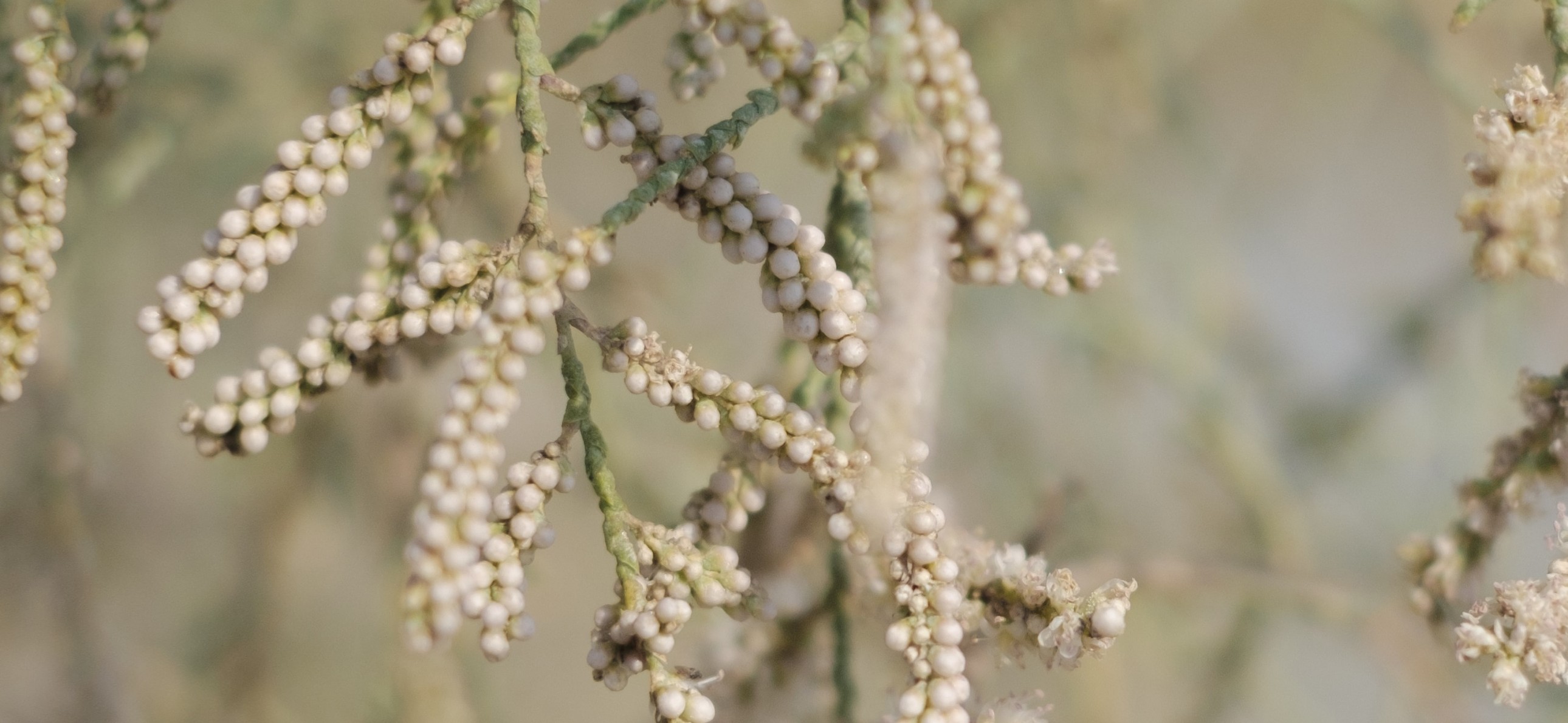Scientific Name: Haloxylon persicum
Arabic name : Ghada, نبات الغضا
Although it might not look as graceful as its name implies, the Haloxylon persicum, known as the 'Ghada' shrub or white saxaul, is one of the most popular desert plants frequently mentioned in classical Arabic poetry. It is a plant of sandy habitats growing mostly along the slopes of low dunes and sand plains and is very tolerant to environmental extremes in temperature, light and water availability.
You might not be able to see them, but its leaves are there, they’re just very small! The tree is in leaf all year, but you can see its yellow flowers only in March.
One of the dominant trees of the sandy deserts, the wood of the tree is heavy and coarse in contrast to its bark which is spongy and water-soaked making it a potential source of firewood. Other uses come from its extensive root system, which helps stabilize sandy soil and reduce desertification. It also has an auto-watering mechanism with its branches collecting water droplets/moisture from the atmosphere and waters itself! At bottom of the shrub sand gathers forming hummocks, providing a home to small rodents, snakes, and scorpions.
There has been a significant decline in the number of Ghada trees and it is now threatened with over-harvesting for firewood and overgrazing by livestock.
Nature sites where the Ghada can be found are:
Al Ghada Protected Area: It has a restricted distribution for the Ghada shrub and it represents its eastern distribution limit in the Arabian Peninsula, with a total area of 1,088 square kilometers.
Al Wathba Wetland Reserve: The first established Protected Area in Abu Dhabi and home to more than 4,000 flamingos! It was recognized by the Convention on Wetlands of International Importance and was declared a Ramsar site in 2013.
Click on the link for the knowledge hub glossary: https://www.connectwithnature.ae/knowledge-hub/knowledge-hub-glossary-0
ADDITIONAL INFORMATION ABOUT THE Ghada Shrub:



